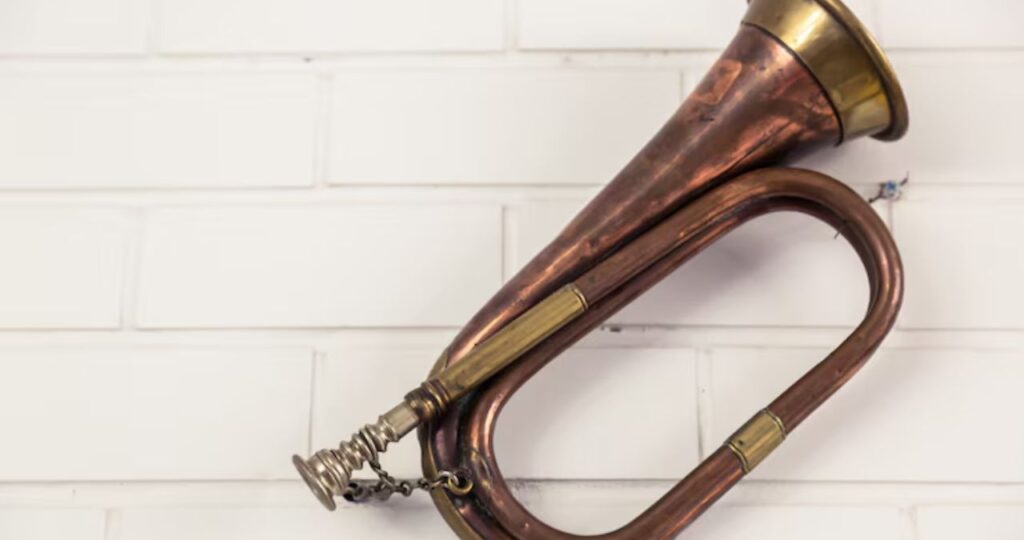The sheer size, earth-shaking sound, and unmistakable presence of the sousaphone make it a symbol of marching bands. Often called the heart of marching brass, the sousaphone is not just an instrument; it’s an experience. For beginners, enthusiasts, or anyone curious about this remarkable piece of musical craftsmanship, this post will unravel everything you need to know about the sousaphone. From its history to its impact on music, and a few pro tips for players, we’re covering it all.
Grab your curiosity and step into the world of the sousaphone – where booming resonance meets marching band tradition.
A Brief History of the Sousaphone
The sousaphone owes its origins to one of America’s most famous musicians, John Philip Sousa. Known as “The March King,” Sousa wanted a tuba-like instrument that was easier to play while marching and offered a more pleasing outward projection of sound. Inspired by Sousa’s vision, J.W. Pepper, a prominent instrument maker, designed the first sousaphone in the 1890s.
Unlike traditional tubas, which require the player to point the bell upwards, the sousaphone directs its bell forward, producing a sound that travels further and more evenly across audiences in outdoor settings. This design made the sousaphone synonymous with marching bands, parades, and large-scale outdoor musical performances.
When paired with Sousa’s famous military band music, the sousaphone became much more than an instrument; it became an icon of celebration and patriotic expression.
The Anatomy of a Sousaphone
To understand the sheer brilliance of the sousaphone, let’s break down its components:
1. Bell
-
-
- The crown jewel of the sousaphone
-
Easily recognizable, the gigantic forward-facing bell is what gives the sousaphone its distinct look and sound. It allows the sound waves to project clearly and forcefully, making the instrument ideal for open-air performances.
2. Body
-
-
- A wrap-around design for comfort
-
Unlike the tuba, the sousaphone’s serpentine body wraps around the player. This design distributes its weight evenly, making it more comfortable to carry during long marching sessions.
3. Valves
-
-
- Precision control over pitch
-
The three (or sometimes four) valves allow players to manipulate airflow and change pitch, bringing versatility to an instrument known for its deep and resounding bass tones.
4. Mouthpiece
-
-
- Small but mighty
-
Like other brass instruments, the sousaphone relies on the player’s buzzing lips against the mouthpiece to produce its rich tones. A well-crafted mouthpiece plays a crucial role in tonal quality.
5. Leadpipe
-
-
- Connecting the player to the instrument
-
This tubing connects the mouthpiece to the valves, setting the stage for the sound to begin.
Why the Sousaphone Stands Out
Wondering what makes the sousaphone so special? Beyond its towering size and unmistakable sound, here are some standout attributes:
1. Unmatched Projection
The sousaphone’s large bell and its forward-facing design create a sound robust enough to carry across stadiums, parade grounds, and outdoor arenas. Its booming bass anchors the band’s rhythm and complements high-pitched brass instruments like trumpets and trombones.
2. Portability for Performances
Unlike the upright tuba, which is bulky and stationary, the wrap-around design of the sousaphone allows musicians to march comfortably while maintaining exceptional tonal quality. This makes it essential for marching bands and military ensembles.
3. A Symbol of Celebration
From college football games to national parades, the sousaphone is often seen leading the charge in grand festivities. Its presence brings a sense of spirit, community, and musical grandeur.
Tips for Aspiring Sousaphone Players
Thinking about picking up the sousaphone? Here are a few essential tips to guide your learning experience:
1. Master the Basics of Brass Playing
Before jumping into the sousaphone, it helps to familiarize yourself with basic brass techniques such as buzzing, breath support, and valve control. Consider starting with smaller brass instruments like the trumpet or baritone horn.
2. Learn to Balance the Weight
While the wrap-around design makes it manageable, the sousaphone is still a heavy instrument. Building core strength and proper posture is vital to wearing and playing the instrument comfortably.
3. Practice Projection
Since the sousaphone is designed to project sound over large areas, practicing controlled breath techniques will help you maintain steady, resonant tones.
4. Invest in Maintenance
From oiling the valves to keeping the bell clean, regular maintenance ensures your sousaphone remains in optimal condition.
5. Join a Marching Band
There’s no better way to immerse yourself in the sousaphone experience than being part of a marching band. You’ll not only improve your playing but also enjoy the camaraderie of other musicians.
Fun Facts About the Sousaphone
If you’re still curious about this unique brass instrument, here are a few fun facts to impress your fellow music enthusiasts:
- The sousaphone’s bell alone can measure up to 26 inches in diameter.
- A fully assembled sousaphone can weigh anywhere between 30 to 50 pounds, depending on the material (brass or fiberglass).
- Unlike most instruments, the sousaphone isn’t restricted to musical settings. It frequently makes appearances in movies, commercials, and even street performances.
Where the Sousaphone is Shining Today
While the sousaphone was born in the late 19th century, its relevance is as strong as ever. Today, this powerhouse of brass is used in:
- Collegiate Marching Bands: From halftime shows to fight songs, the sousaphone plays a central role in electrifying crowds.
- Jazz Ensembles: Some fusion and New Orleans-style jazz bands incorporate sousaphones to add depth and texture to their performances.
- Parades and Celebrations: Whether it’s a 4th of July parade or Mardi Gras, the sousaphone’s mighty sound brings energy and movement to the festivities.
Become a Part of the Sousaphone Legacy
Whether you’re a fan of marching bands or considering trying the instrument yourself, the sousaphone holds a timeless appeal. It combines functionality, art, and tradition, making it a fascinating piece of musical history and culture.
Want to explore more about brass instruments or discover tips for starting your sousaphone journey? Stay tuned to our blog for expert advice and inspiring musical insights.






